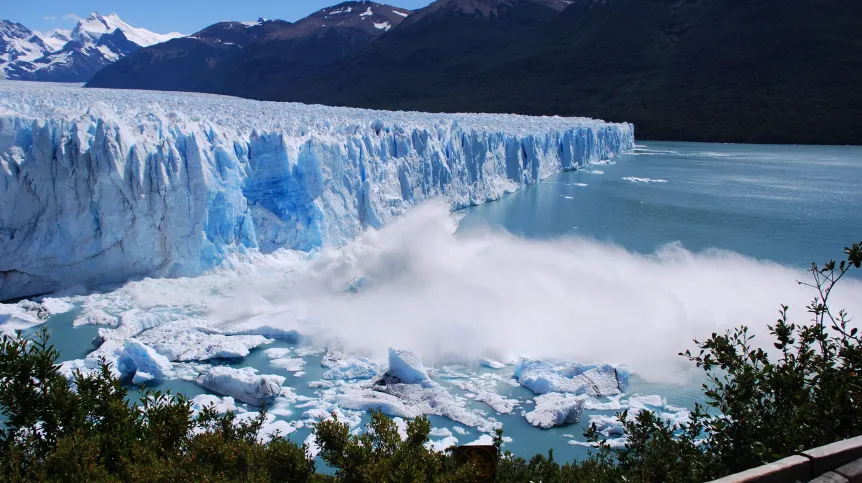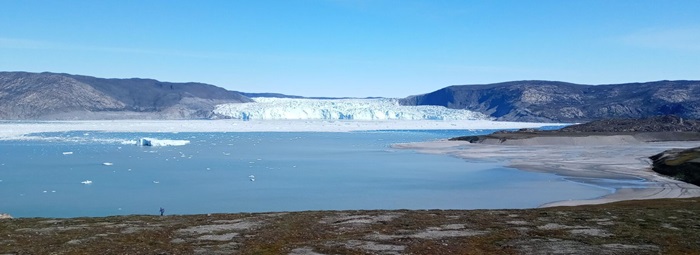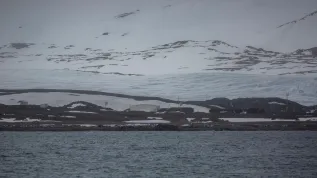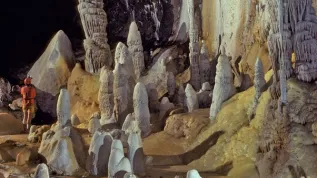
The rapid retreat of glaciers in the Northern Hemisphere is freeing new coast sections from under the ice. In the years 2000-2020 alone, this process led to the creation of almost 2,500 km of coastline there. Greenland is 'getting' most of the new coastline, report scientists from an international team, including Polish researchers.
Current climate change is causing the rapid reduction of the range of glaciers in the Northern Hemisphere, including glaciers that flow into the sea in the Arctic and subarctic areas. As a result of this process, significant areas of new coastlines are being freed from under the ice. They have so far escaped the attention of researchers.
An international team of scientists from Poland, Czechia, the United States and Canada is helping to fill the gap in knowledge about coastlines being freed from under glaciers in the 21st century.
In their work, the scientists used a glaciological database (recently published by Dr. William Kochtitzky from the University of New England) for all marine-terminating glaciers in the Northern Hemisphere. They compared this database with available satellite images that included the forelands of these glaciers. As a result, they determined that in the years 2000-2020, glacial recession led to the emergence of almost 2,500 km of new coastline. This means that on average, over 120 km of coastline is added each year.

Greenland, covered by the only ice sheet in the hemisphere, is responsible for two thirds of this value.
During the same period, only a little over 50 km of coastline disappeared under the glaciers.
During the study, the scientists also identified 35 large islands exposed by glaciers, 13 of which they described for the first time.
The results of the work were published in the journal "Nature Climate Change".

In addition to inventory work, the scientists also checked whether the length of new coasts was proportional to changes in the glacier surface area, adds Małgorzata Szczypińska, the co-author of the study and research paper, a doctoral candidate in the 'GLAVE' project from the Alfred Jahn Cold Regions Research Centre at the University of Wrocław.
The scientists detected clear differences between individual glaciers, and between regions. They report that the glaciers of Baffin Island, Alaska and southeastern Greenland create new coasts much more effectively than the glaciers of other regions. They observed the other extreme on the islands of the Russian Arctic, where, despite the significant area covered by glacier recession, few new coasts emerged.
The first author of the publication, Jan Kavan, PhD, from the Centre for Polar Ecology at the University of South Bohemia emphasises how important access to open databases is in contemporary work on the response of cold regions to the ongoing climate warming. 'Our work would be very difficult without access to current and compiled data on the recession of glaciers flowing into the sea in the Northern Hemisphere. Based on glaciological data, we discovered a real terra incognita on the border between the sea, glaciers and land. When in 2023, Professor Mateusz Strzelecki and I discovered that since the end of the Little Ice Age the recession of glaciers had exposed over 900 km on Svalbard alone, no matter how you look at it - a tiny fragment of the Arctic, we dreamed of checking what this process looked like hemisphere-wide. The paper in Nature Climate Change is our response to this challenge'," Kavan adds.

The new findings are important for research on the Arctic coast - comments Professor Mateusz Strzelecki, co-author of the publication and leader of the SONATA BIS NCN project, in which analyses for the new paper were performed.
According to Professor Mateusz Strzelecki, recent years have seen a renaissance in research on the Arctic coast. However, the emphasis was mainly on the rapidly eroded permafrost coasts of northern Alaska, Yukon or Siberia. Little information came from the coasts of the still glaciated regions of the Arctic, Greenland, the Canadian Arctic Archipelago and Svalbard.
'Our work is really the opening of a new chapter in the research of the world's youngest coasts. These 2,500 km of coasts, covered by glaciers for at least a dozen or so centuries - these are places where waves and tides transform glacial forms into new beaches, scythes, lagoons and cliffs. We also cannot forget that steep coasts, recently freed from the glaciers of fjords, are also places of potential landslides or rockfalls capable of causing powerful tsunami waves. In recent years, powerful waves recorded in Alaska and Greenland came from destabilized coasts, which the glaciers recently left', he adds.
Scientists are also interested in the potential for further development of the newly exposed coasts. To assess this, they conducted an analysis of the substrate parameters and local climate. They identified the longest sections of coasts most susceptible to weathering and erosion (i.e. formed in sedimentary rocks) along the eastern coasts of Svalbard, Alaska and the northern reaches of Greenland.

Professor Mette Bendixen from McGill University points out that many reports on threats to indigenous peoples of the Arctic have so far focused on the dramatic rate of erosion intensified by permafrost degradation. According to the scientist, monitoring programs for the condition of the Arctic coasts should also take into account the young coasts described in the study. That is where local residents and tourists visiting spectacular glaciers flowing into the sea may be exposed to a wide range of glacial geohazards', she concludes.
The research was financed by the Polish National Science Centre as part of the GLAVE project, which aims to better understand the environments of paraglacial coasts flooded by extreme waves caused by cryosphere degradation. (PAP)
PAP - Science in Poland
zan/ agt/













